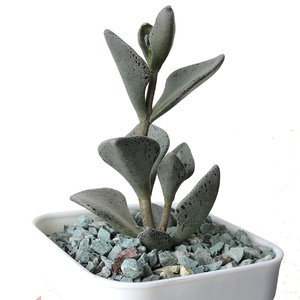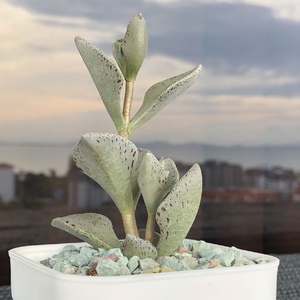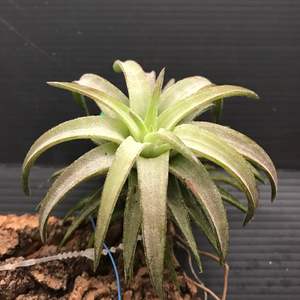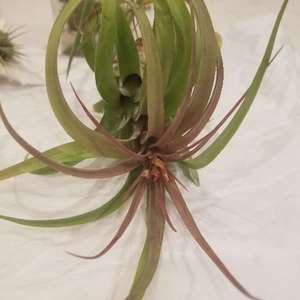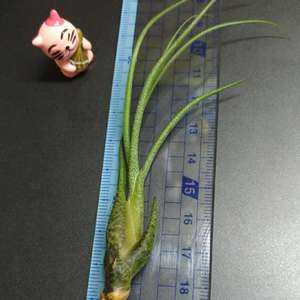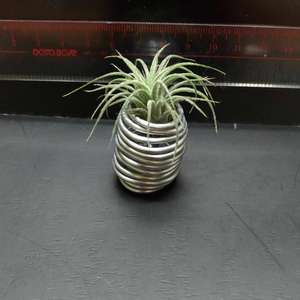文章
Miss Chen
2018年08月22日

In temperate areas of the U.S., Spanish moss, also known as Tillandsia usneoide, can be grown outdoor on oak and cypress trees without fear of losing it to killing freezes. Northerners can enjoy it, too, since this tough and determined plant will resurrect when sustained temperatures rise above about 50 degrees Fahrenheit. Whether you're pulling Spanish moss from your own tree to propagate it elsewhere or receiving it as an ordered product, Tillandsia usneoides transplants readily and easily. This unusual, decorative epiphyte is adaptable, durable, undemanding and care- and maintenance-free once established. You'll soon have wispy festoons of Spanish moss waving gently in soft summer breezes.

Step 1
Remove the Spanish moss from its package immediately upon receipt. Don't allow it to remain unpacked for more than one to two days.
Step 2
Spread the Spanish moss on the lawn in the shade, using a grass rake for large quantities. Give the mass a gentle spraying with a garden hose to wet it. The strands are loosely interwoven and have a lot of space between them. It's akin to watering a pile of fishing net, but the strands immediately begin absorbing the water. Spanish moss also takes a significant amount of its moisture directly from the air around it. You're just giving it a bit of a jump start, and more water won't be needed once the plant is situated. Allow it to breathe two hours as it rehydrates itself.
Step 3
Gather the Spanish moss. Place it in a 5-gallon bucket or, if there is a lot of it, put it in a wheelbarrow. Transport to the tree for transplant. Choose spots among tree limbs to transplant the Spanish moss, which needs only one branch to secure itself to. Forks in limbs or large twigs are excellent anchors. The best locations are lower and mid-level branches near the outer edges of the canopy in full or partial sun.
Step 4
Grab a double handful of the Spanish moss. Separate the strands gently with your fingers. Pull a wad of it from the mass. Don't worry about breaking the strands, which will regenerate in no time. Stuff the wad into the fork of a branch, or hang long strands over it. The Spanish moss will cling to imperfections on the rough bark. It's a lot like decorating a Christmas tree with tinsel.

Step 5
Stick Spanish moss in higher limbs, using a rake, pole saw or paint roller extension pole. Some like to park a pickup truck under the tree and stand in its bed for this task.
Step 6
Tie a little bit of cotton twine around the Spanish moss if you're worried about it falling out of the tree.
Step 7
Spray the transplant with the hose to help situate it in its new home.
Step 8
Pick moss up from the ground and quickly place it back in its perch if it happens to fall out of the tree, even during the winter. It will be fine.

Step 1
Remove the Spanish moss from its package immediately upon receipt. Don't allow it to remain unpacked for more than one to two days.
Step 2
Spread the Spanish moss on the lawn in the shade, using a grass rake for large quantities. Give the mass a gentle spraying with a garden hose to wet it. The strands are loosely interwoven and have a lot of space between them. It's akin to watering a pile of fishing net, but the strands immediately begin absorbing the water. Spanish moss also takes a significant amount of its moisture directly from the air around it. You're just giving it a bit of a jump start, and more water won't be needed once the plant is situated. Allow it to breathe two hours as it rehydrates itself.
Step 3
Gather the Spanish moss. Place it in a 5-gallon bucket or, if there is a lot of it, put it in a wheelbarrow. Transport to the tree for transplant. Choose spots among tree limbs to transplant the Spanish moss, which needs only one branch to secure itself to. Forks in limbs or large twigs are excellent anchors. The best locations are lower and mid-level branches near the outer edges of the canopy in full or partial sun.
Step 4
Grab a double handful of the Spanish moss. Separate the strands gently with your fingers. Pull a wad of it from the mass. Don't worry about breaking the strands, which will regenerate in no time. Stuff the wad into the fork of a branch, or hang long strands over it. The Spanish moss will cling to imperfections on the rough bark. It's a lot like decorating a Christmas tree with tinsel.

Step 5
Stick Spanish moss in higher limbs, using a rake, pole saw or paint roller extension pole. Some like to park a pickup truck under the tree and stand in its bed for this task.
Step 6
Tie a little bit of cotton twine around the Spanish moss if you're worried about it falling out of the tree.
Step 7
Spray the transplant with the hose to help situate it in its new home.
Step 8
Pick moss up from the ground and quickly place it back in its perch if it happens to fall out of the tree, even during the winter. It will be fine.
0
0





